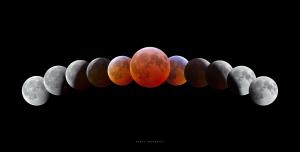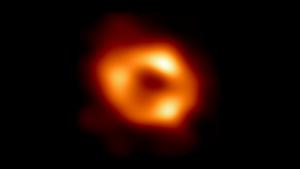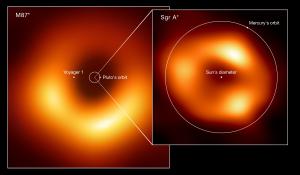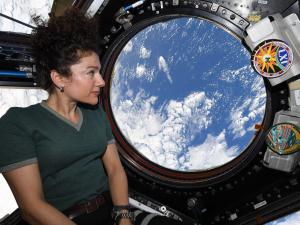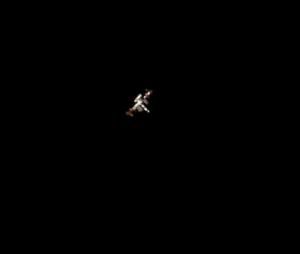Celebration of Space - May 13, 2022
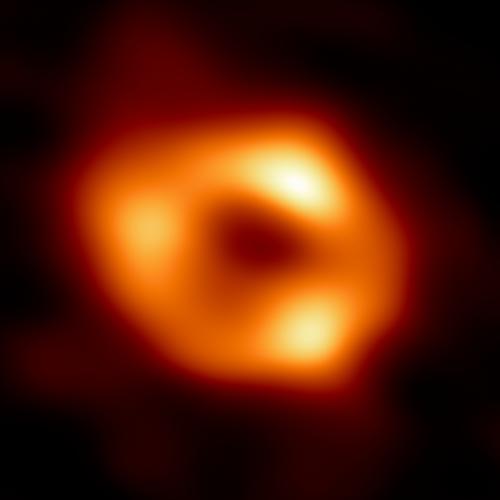
The first image ever captured of Sagittarius A*, the super-massive black hole at the center of the Milky Way galaxy. Credit: Event Horizon Telescope collaboration.
This coming Sunday night, May 15, and lasting until the morning hours on Monday, May 16, a fabulous total lunar eclipse will be coming to the US. In New England, we are set up for a perfect eclipse, so of course the weather will be the playground bully! At this time, it is looking like it may be difficult to catch a view of the entire eclipse from anywhere in the Northeast, with Frosty Drew Observatory and Science Center under fully overcast conditions for the entire night. At this time, we think it will be highly unlikely that our on-site event will happen. Though we are hopeful that some of our astronomers will be able to find a clear spot to run our live stream event. In any case, if you find that you have a clear view of the Moon anytime between 9:32 pm Sunday night and 1:55 am Monday morning, be sure to step outside during any opportunity to catch a view of the eclipse. Total eclipse will happen from 11:29 pm until 12:54 am, giving you nearly 1.5 hours to get out to catch a view. During this time is when the Moon will take on a crimson red hue. Check out our event page, just in case we end up with the unexpected clear(er) night. If you happen to find a clear spot, and capture a picture of the eclipse, be sure to either share it to the Community section of our Faceboook, or email it to us at astronomer@frostydrew.org, and we will share it on our social media. Good luck!
On Thursday, May 12, 2022 the Event Horizon Telescope collaboration (EHT) released the first image ever captured of Sagittarius A * (Sagittarius-A-Star), the super-massive black hole at the center of the Milky Way galaxy. The image was actually captured over a period during spring 2017, and subsequent processing, study, papers, and peer review followed. Equally fascinating, this image is direct visual evidence that Sagittarius A* is, as predicted, a super-massive black hole. A prediction made using Einstein’s General Relativity.
The Event Horizon Telescope is an international collaboration that uses several radio telescopes, which are located at geographically distant locations from each other around Earth, concurrently, creating an interferometer that has an aperture that’s equal to the diameter of Earth. Images captured by the EHT are not captured in the visible spectrum, actually quite far outside of it, and though they are real pictures of these objects, the view in reality would be different than what we see in these images. This is because the wavelengths that are captured have to be mapped to colors that humans understand, which are in the visible spectrum, creating a false-color image.
In the image by the EHT, the shadow of the black hole’s event horizon is visible as the dark central region. The bright ring around it is gas that is spinning around the black hole at nearly the speed of light. The event horizon of a black hole is the part of the black hole that actually forms what looks like a hole in space. Loosely described, it is the distance from the singularity - the central mass of the black hole, where gravity is so great that the escape velocity is greater than the speed of light. Escape velocity is the speed that an object would need to achieve to escape the gravity of a massive object. The escape velocity of Earth is 25,020 mph at the surface, and reduces at higher altitudes. The object at the center of a black hole (a stellar remnant and all collected matter) has intense mass compacted into a relatively small area, making for so much gravity, that all paths light can take are directed towards the singularity instead of away, so even light cannot escape. The event horizon is the distance from the singularity where escape becomes impossible, even for light. This region appears to an outside observer as complete darkness. A photo of the event horizon itself would not be possible, because at that point there isn’t any light to collect.
Sagittarius A* resides about 26,700 light years from Earth, has a diameter of 27.34 million miles, and has 4,154,000 times the mass of the Sun. It literally is the center of the galaxy. Now these numbers are extreme! The Sun has a diameter of 865,370 miles, which will make Sagittarius A* near the size of the orbit of Mercury. But it’s the mass that is mind-blowing. If the Sun with its current mass was a black hole, it would be about 3.61 miles in diameter (Schwarzschild Radius2 of the Sun)! Though at the distance of 26,700 light years from Earth, Sagittarius A* would appear about the same size in the sky as a donut on the Moon.
This is another fabulous discovery from the Event Horizon Telescope. The last time that collaboration made headlines was when they captured an image of the super-massive black hole at the center of the Virgo A Galaxy – Messier 87. Check out the image of Sagittarius A*. Then take a few minutes to read up on the discovery.
Now that we are past the spring cross quarter day (May Day), and are closing in on the Summer Solstice, every nighttime pass of the International Space Station (ISS) over our region is becoming visible. But due to the orbital path that the ISS takes around Earth (inclined 5.1º to Earth’s Equator), the ISS will not be adequately placed for visibility passed June 3rd, and morning passes will slowly start to wane as we approach that date. Though beginning on July 2nd, these high frequency past will start to ramp up again with visible morning passes at first, then progressively returning to visibility for every nighttime pass. Here are some notable passes of the ISS in the evening hours for this weekend and coming week:
Fri, May 13 at 10:54 pm, starting in the SW, rising to 88º, heading towards the NE, and into orbital sunset ← Awesome pass!
Sat, May 14 at 9:06 pm, starting in the SW, rising to 52º, heading towards the ENE
Sun, May 15 at 9:55 pm, starting in the W, rising to 36º, heading towards the NE
Mon May 16 at 9:06 pm, starting in the WSW, rising to 56º, heading towards the NE
Tue, May 17 at 9:55 pm, starting in the WNW, rising to 21º, heading towards the NNE
Wed, May 18 at 9:06 pm, starting in the W, rising to 27º, heading towards the NE
If that is not good enough, and you just need more satellite pass awesomeness this week, well Tiangong – China’s space station will be making regular passes in the evening sky this week as well. Here are a few notable passes of Tiangong for the coming nights:
Fri, May 13 at 8:36 pm, starting in the W, rising to 81º, heading towards the ESE ← Awesome pass!
Sat, May 14 at 9:15 pm, starting in the W, rising to 42º, heading towards the SSE and into orbital sunset
Mon, May 16 at 8:55 pm, starting in the W, rising to 26º, and into orbital sunset.
Note that these passes are applicable for Southern New England and are generally acceptable for the entire Northeast. I have only listed the best evening passes for each day listed above. Though for all daily pass times, visit the Frosty Drew Daily Satellite Pass Prediction Utility.
- Author:
- Scott MacNeill
- Entry Date:
- May 13, 2022
- Published Under:
- Scott MacNeill's Columns

